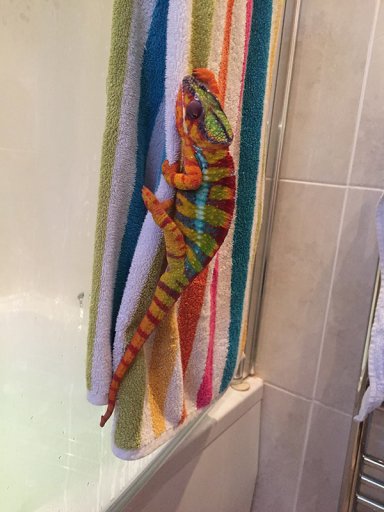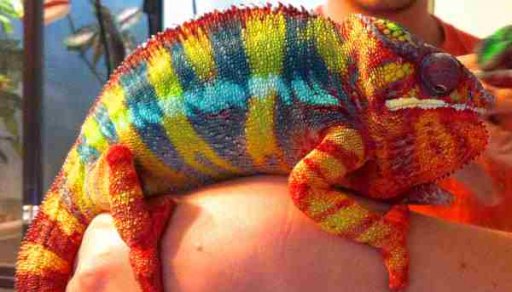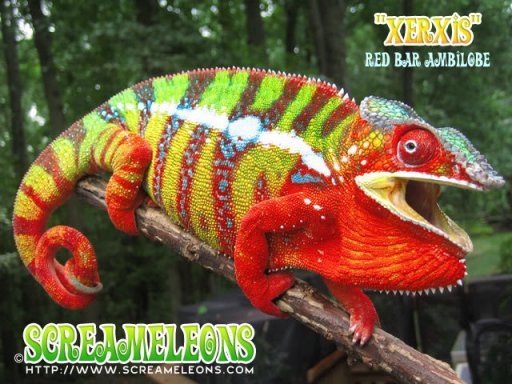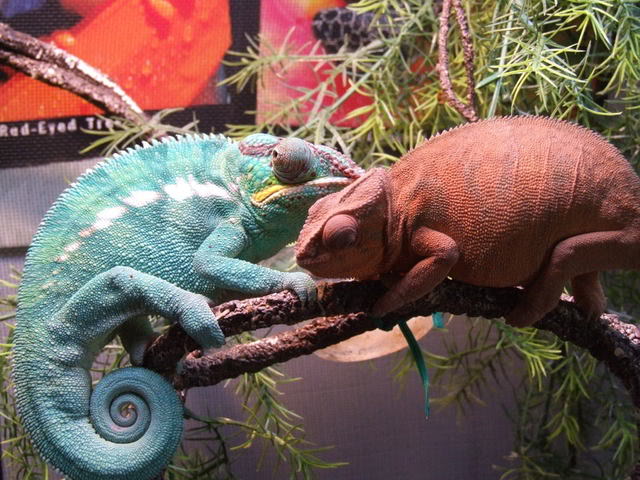deirdre
Senior Member.

©A91PLB Imgur
This little guy is making the rounds lately.
Although most posts i've seen just say "chameleon on bathtowel", some have taken it to the extreme.
This incredible picture shows what happens when you put achameleonon a multi-coloured towel.
In the shot, nature's most gifted camouflage artists clings onto a brightly-striped bath towel.
The crazily-coloured creature has changed its skin to a psychedelic hue of bright colours - perfectly mimicking the stripes of the fabric behind it http://www.mirror.co.uk/news/weird-news/amazing-picture-shows-what-happens-6751732
Confused Chameleon Does Not Know How To Deal With Multicolored Towel
A chameleon ended up displaying colorful artwork on its skin when trying to blend in with a bathroom towel. http://www.hngn.com/articles/155005/20151129/confused-chameleon-know-deal-multicolored-towel.htm
Others just imply the chameleon has changed his colors to match the towel:
This Is What Happens When You Put A Chameleon On a Multicoloured Towel
https://uk.news.yahoo.com/happens-put-chameleon-multicoloured-towel-152307193.html#2Jrhofg
He's trying to blend in. - Pinterest
I cant really tell if he is a Red Bar or Blue Bar, but basically he didnt change colors, that's just how he looks.
Ambilobe Blue Bar Panther (Noki Baby) Chameleon

© Chameleon Boss
Ambilobe Red Bar

screameleons.com
Last edited:

